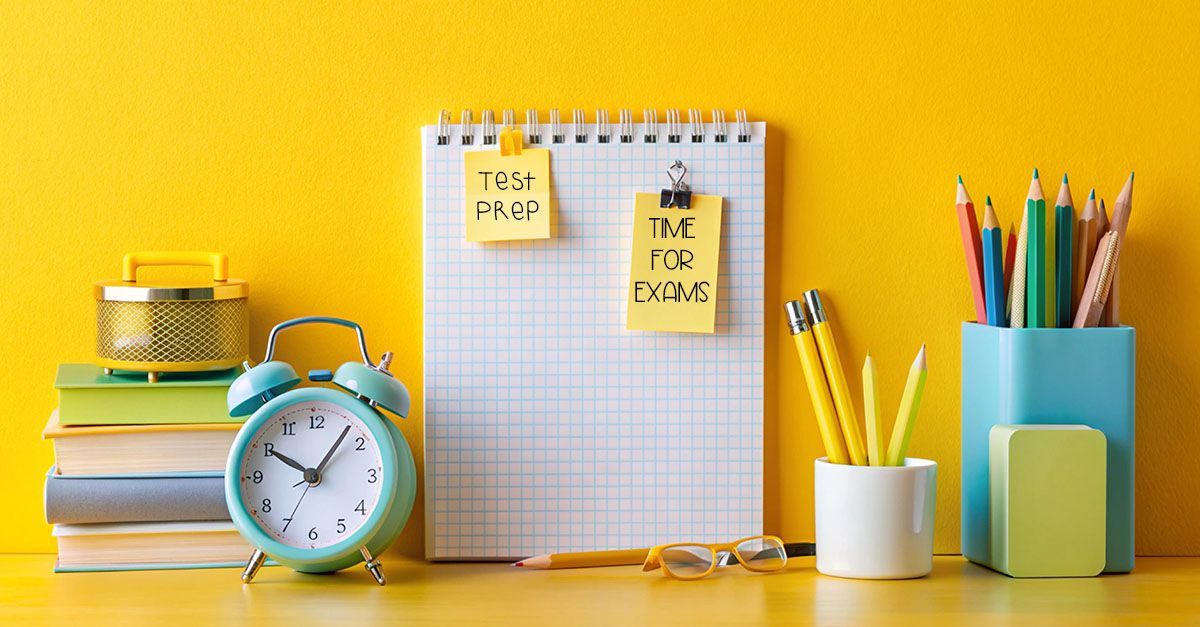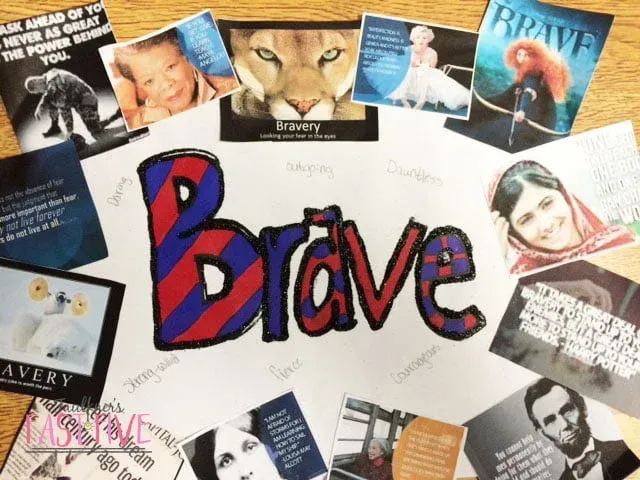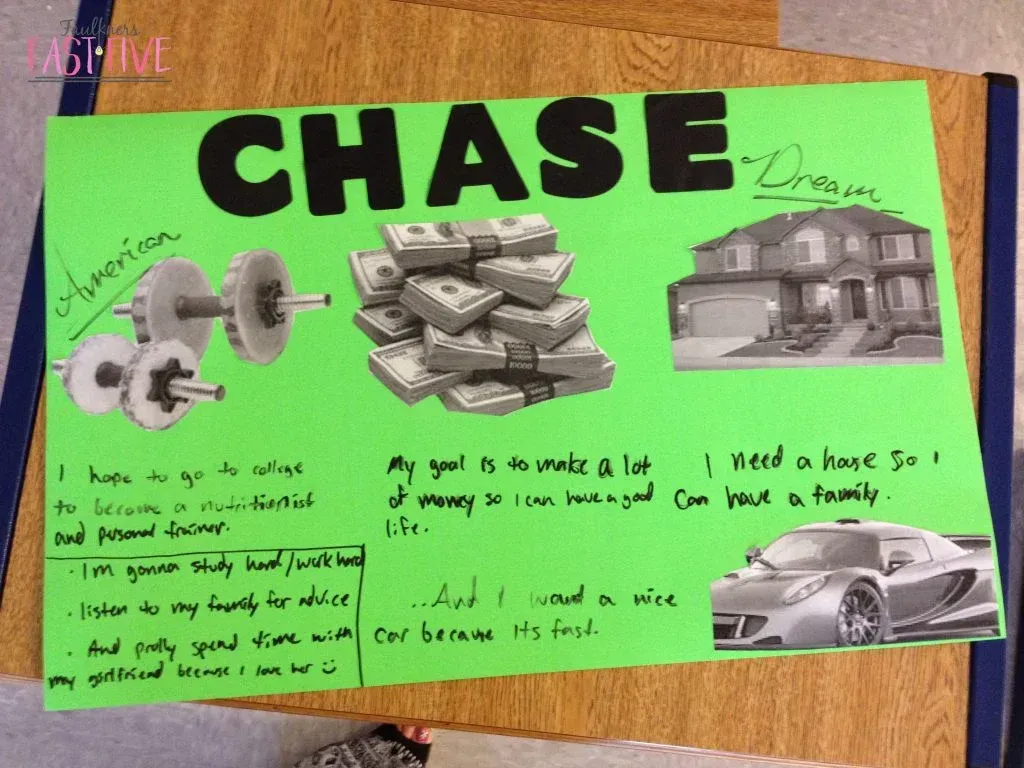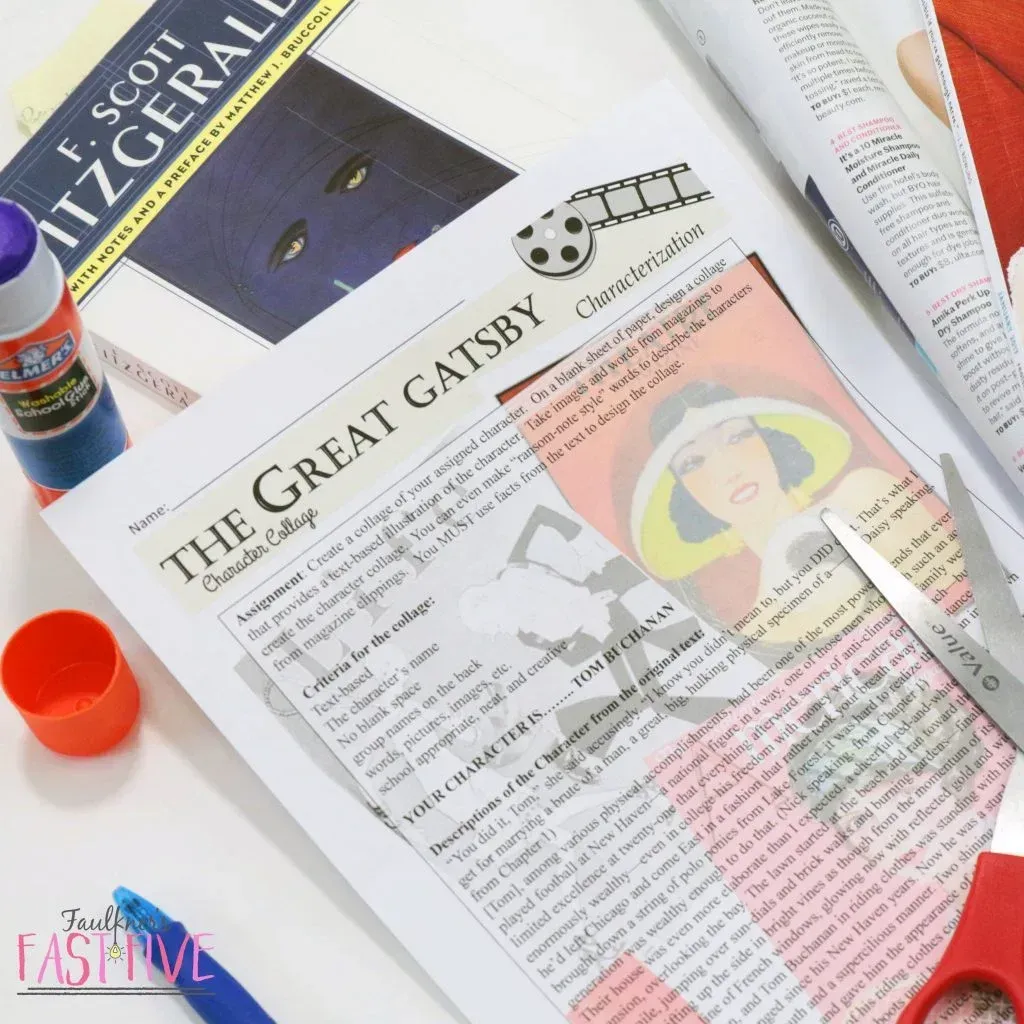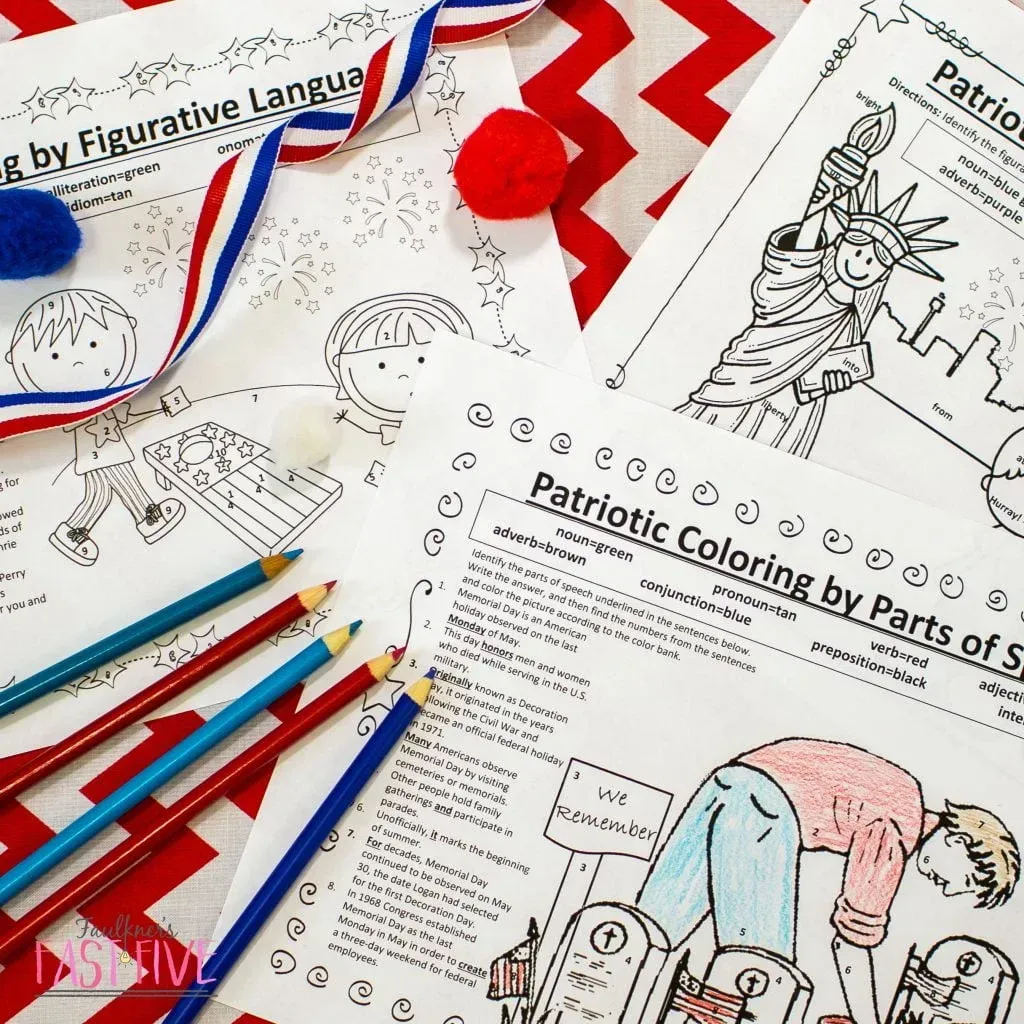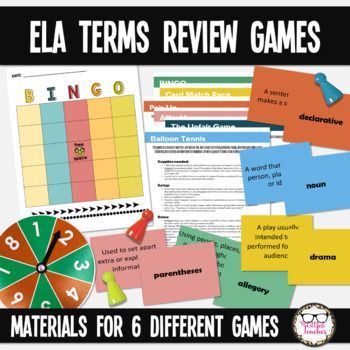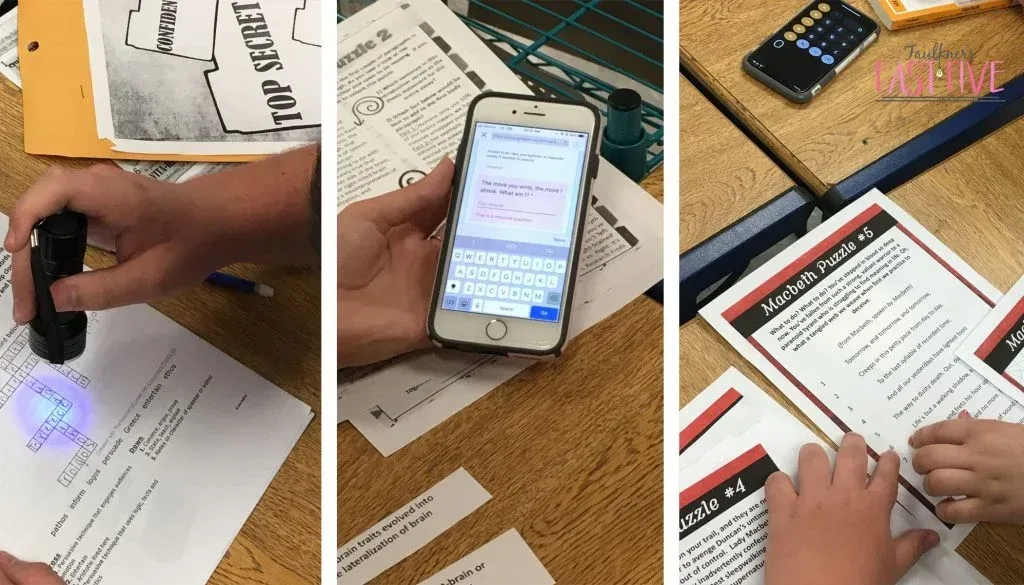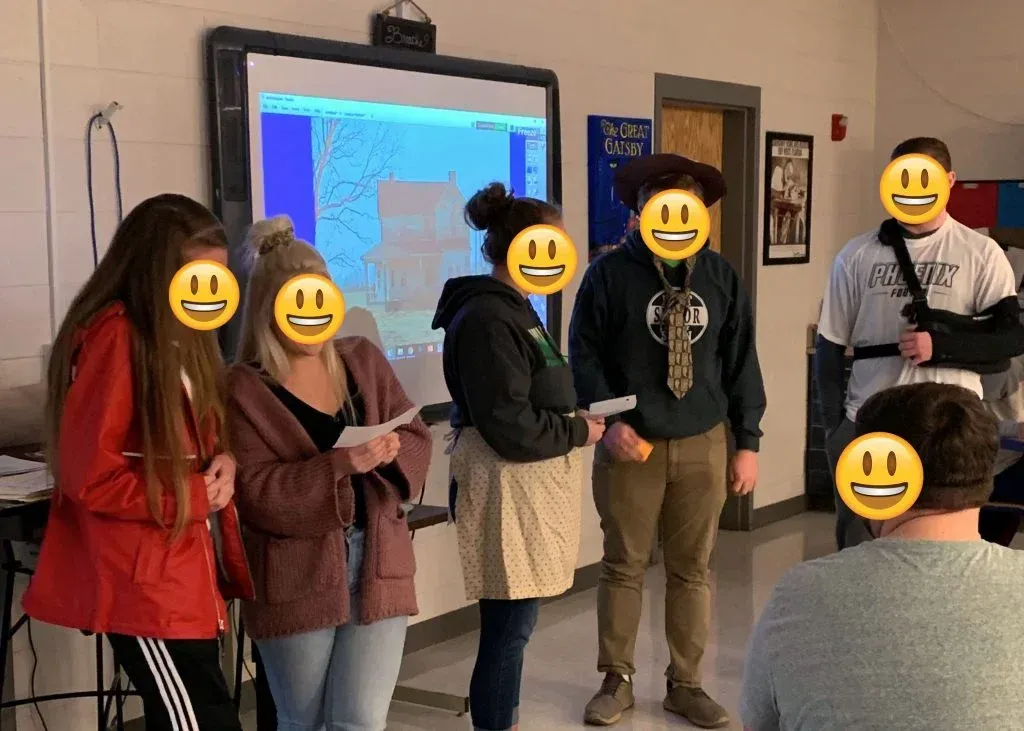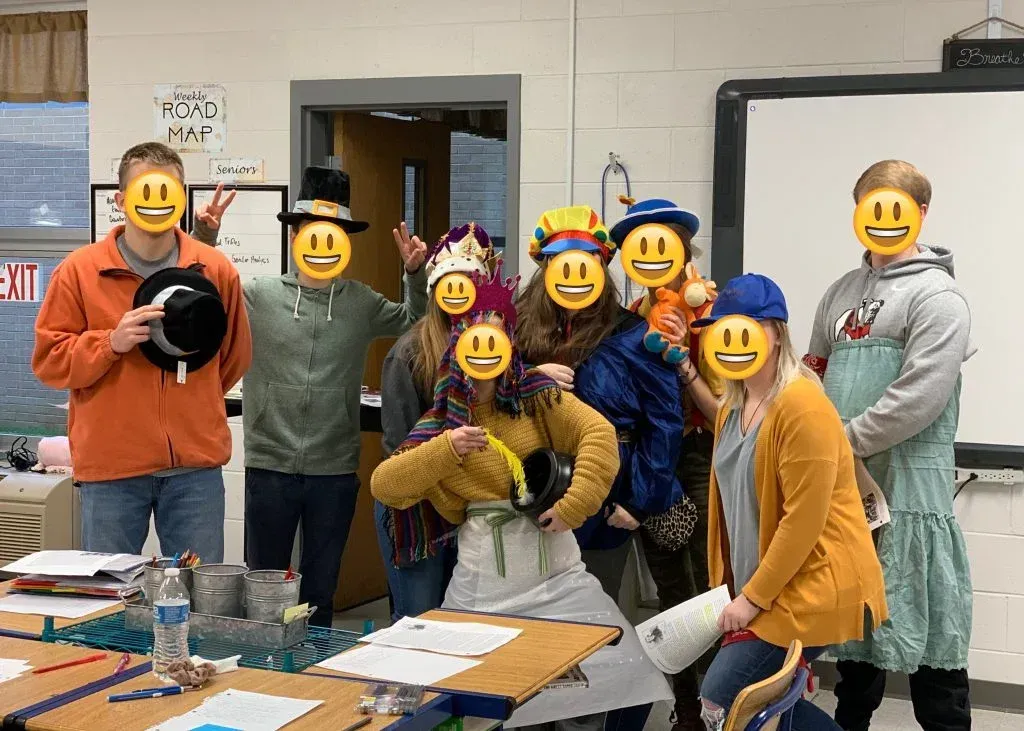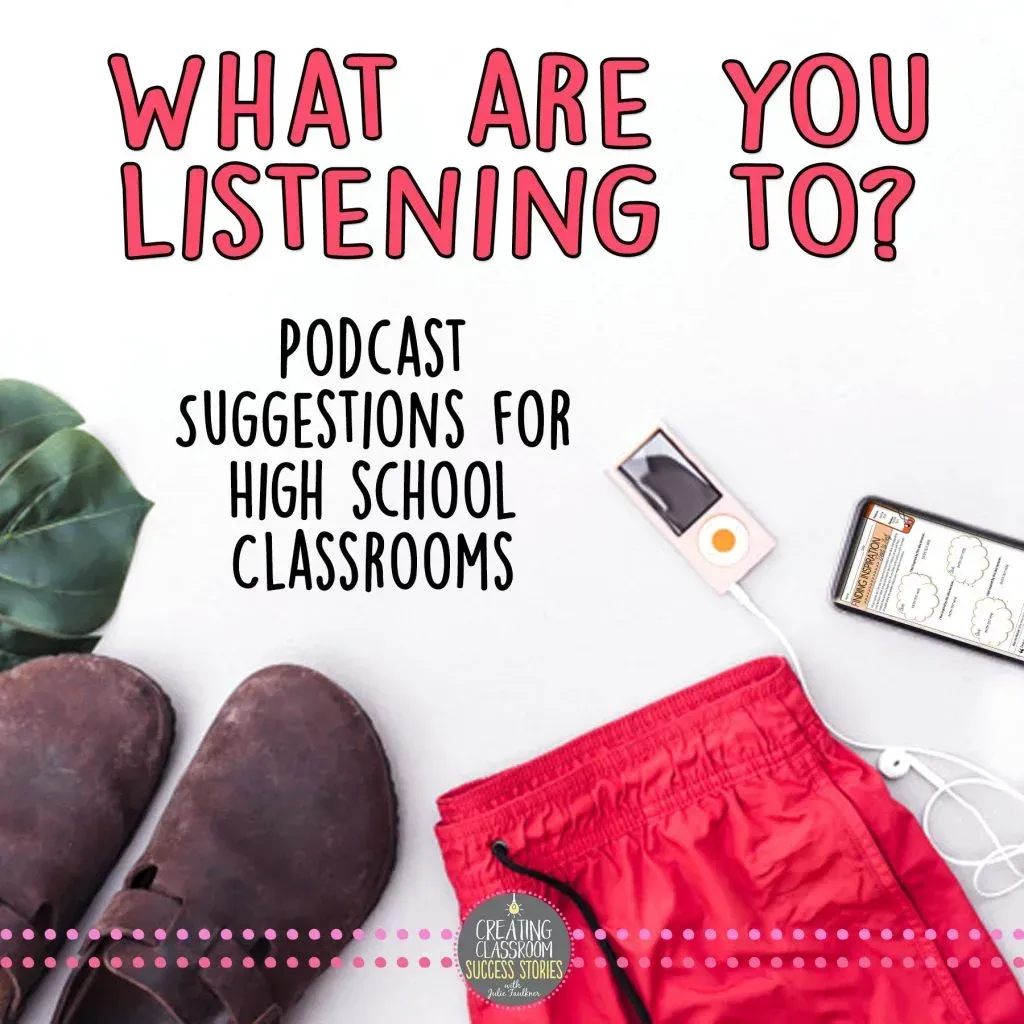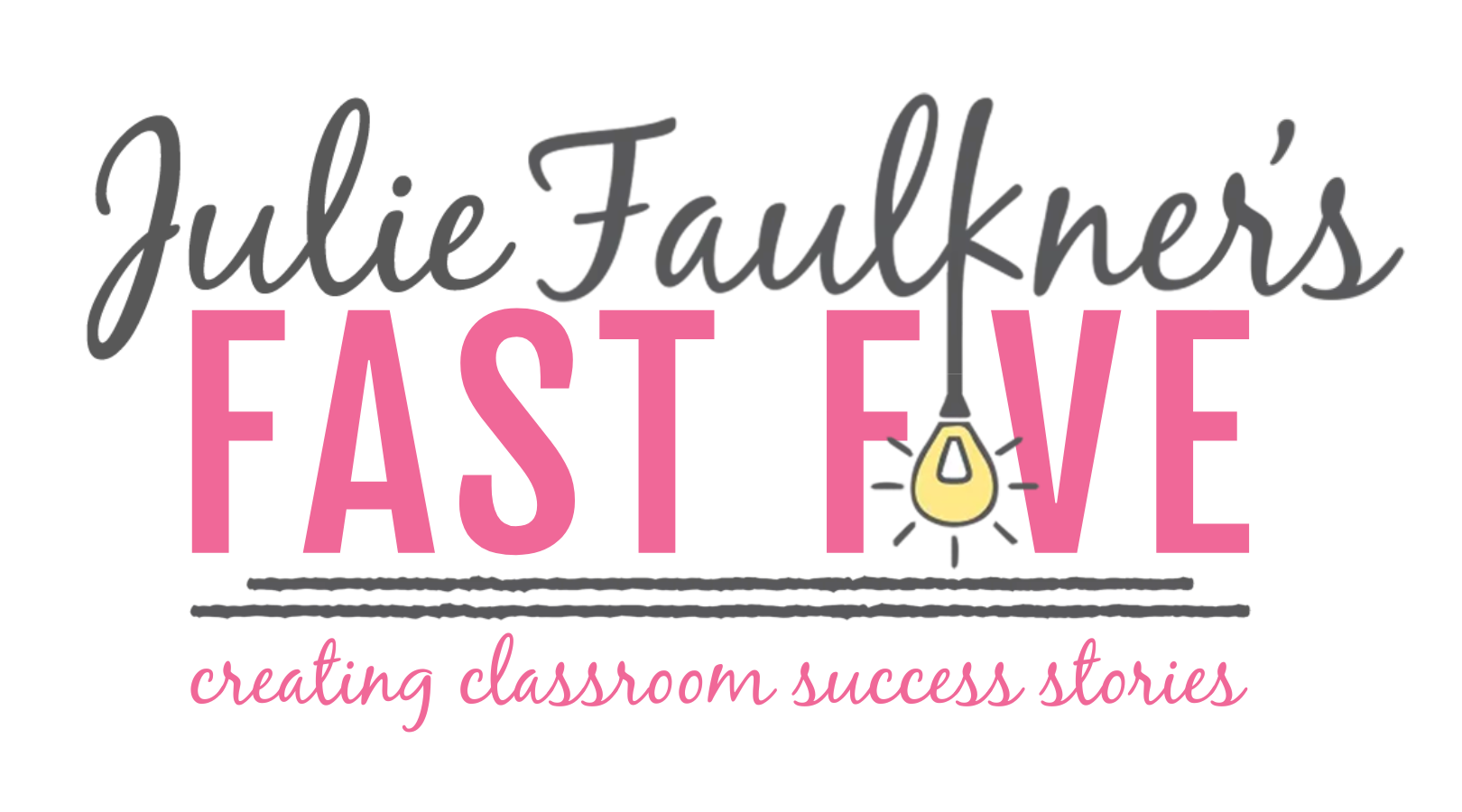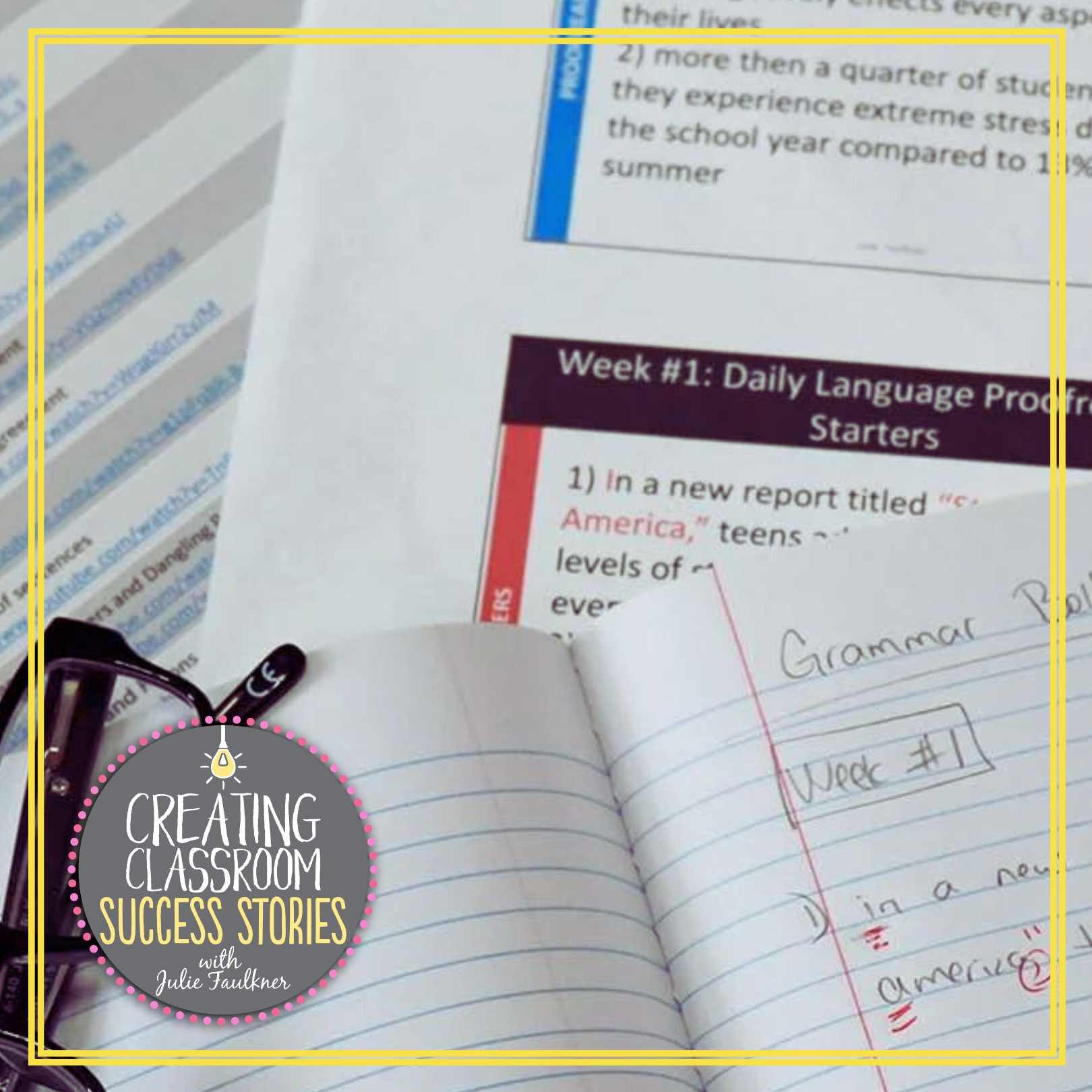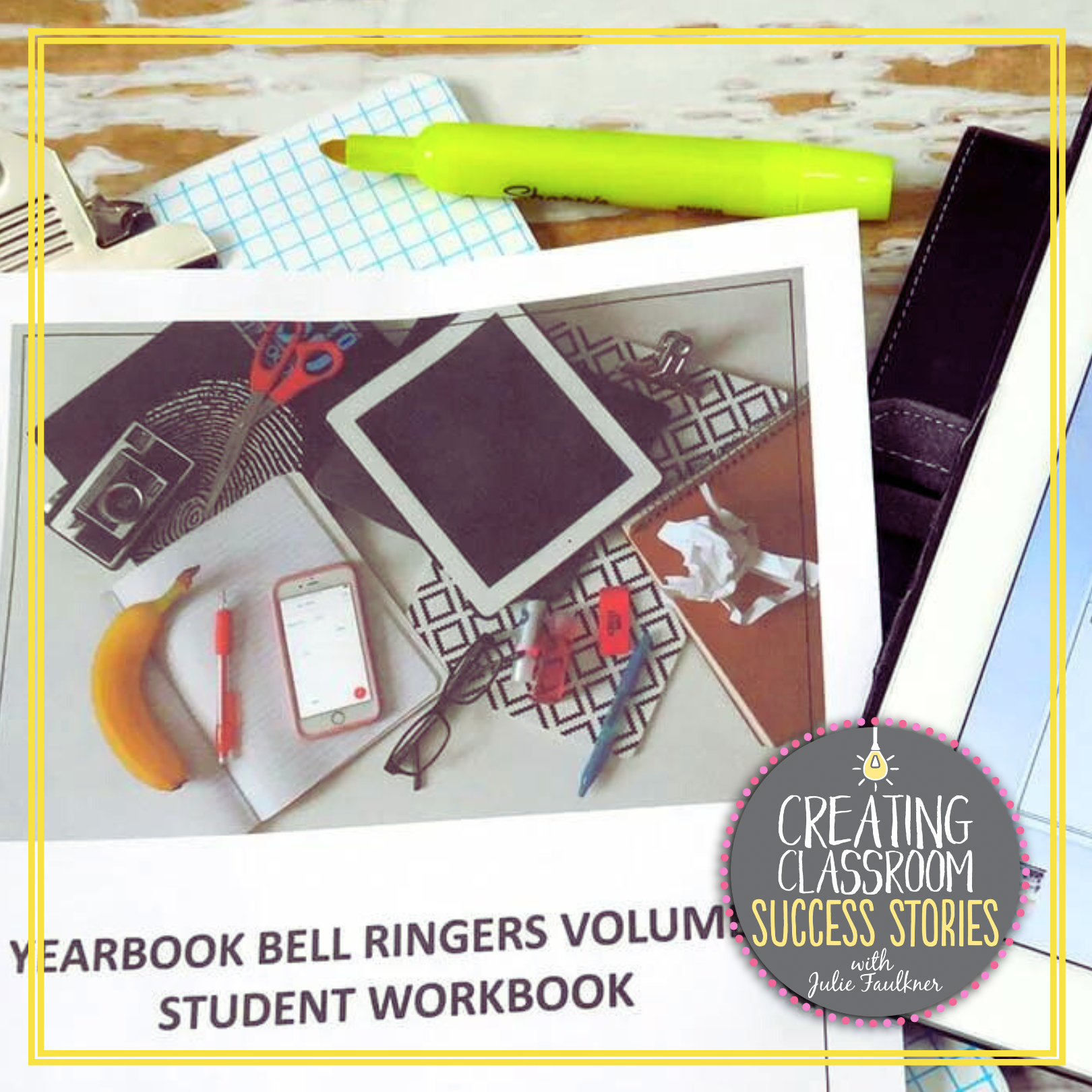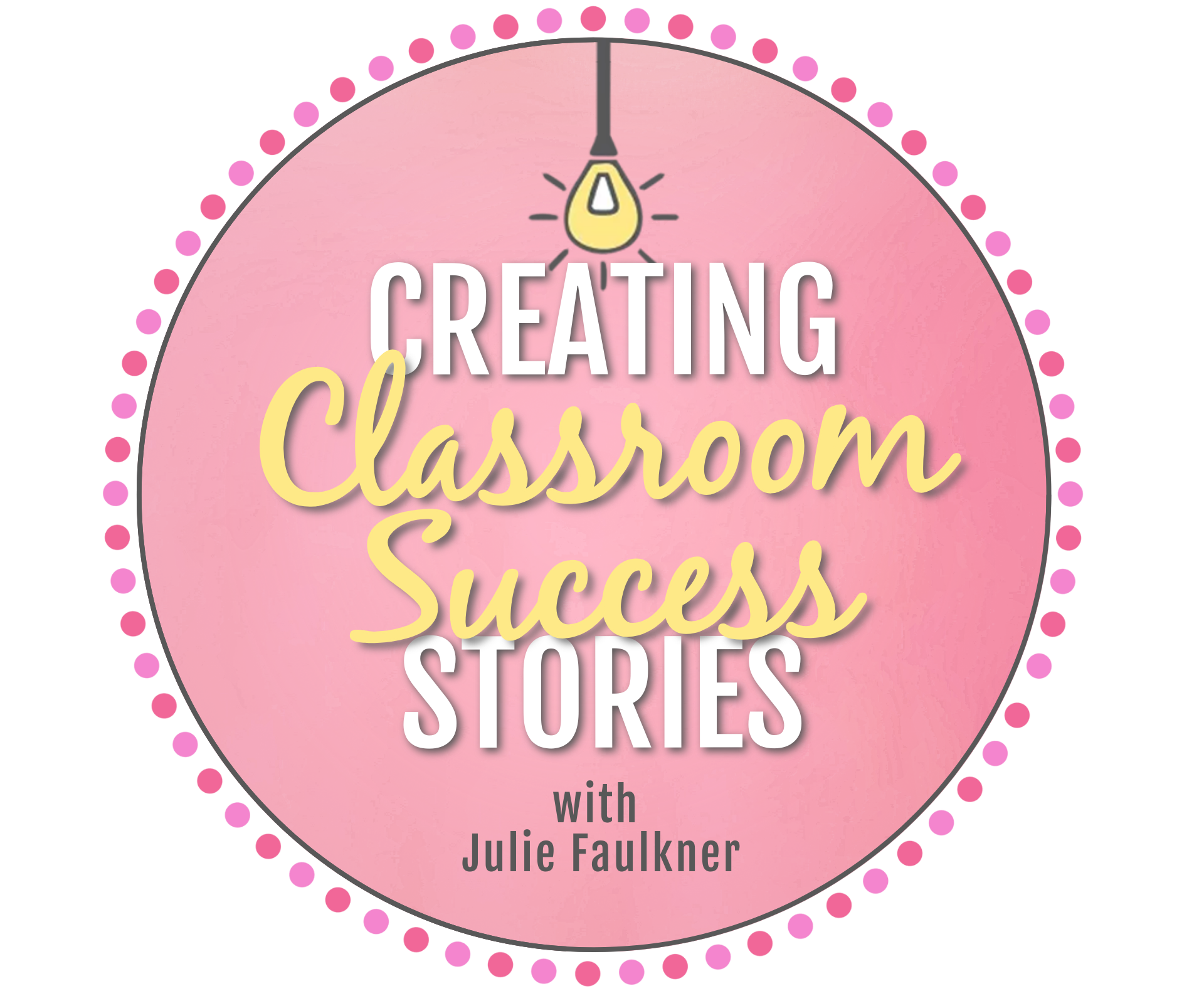Internet-Free Activities for
Middle & High School
Classrooms, Any Subject
Recently, we experienced a school-wide Internet outage where I teach, and being without access to the World Wide Web really threw my students and me (along with everyone else in the building) for a loop. The days we were out of Internet, I had planned for students to make presentations that were stored in Google classroom, print papers to turn in, among other things that required Internet. It’s not the first time the Internet has gone down in our rural school, but going without really kicked my Plan B mindset into gear. So, I’ve put together a list of fabulous Internet-free ideas and resources for middle-high school in any subject that can be used in a pinch – or with some planning – when Ralph, or whoever, breaks the Internet.
1. Get Crafty or Build Something
- Collage projects are pretty much my go-to, hands-on activity when I need to grab something fast, plan for a sub, or fill some time. Even my high school students love to cut and paste and create, and I think it’s even a fun way to sneak in a little reading. I always catch them actually reading the magazines we use. Plus, reusing those old magazines is the best way to recycle them. In English class, I have students make character poems, character personality collages, book covers, social media posts, and the list goes on and on.
- Coloring never goes out of style, and crayons have been around way before the Internet was born. Draw a scene from a book, illustrate a favorite quote, draw the plot, or draw a diagram of the solar system or various other subject-based topics that need to be reviewed through the year. I’ve been using these color-by-grammar or color-by-figurative language worksheets in a pinch forever, and they are always a big hit with my secondary English students.
If you teach secondary math, the Math Stop has a fun coloring-based activity that would be awesome in a no-Internet setting. Students develop their knowledge of graphing coordinate pairs, quadrants, and reflections about the x and y-axis with this fun and engaging art activity. Then, they make it personal by using the letters of their name to decode them into arbitrary numbers from a decoder box. In the end everyone has a cool and colorful design that represents his/her own name.
2. Play Games or Conduct Experiments
- Old-fashioned board games can be very educational whether you are playing them purely for the logic or teamwork of it, or if you are putting your subject-area twist on it. That’s pretty much how I do it; everything has to be English-related. (Wink) When I found these ready-made game cards with an extensive bank of 144 CCSS-aligned grammar and literature terms and definitions by The Littlest Teacher, I thought I had hit the jackpot! If you teach middle or high school English, you are going to want these!
- I don’t know a student who doesn’t love a good game of Trashketball! You can set up a trashketball review game for any subject with little to no prep at all, and you’ll be set. For all things trashketball, I turn to the OCBeach Teacher. She’s the coach on this topic, and she has ready-to-go ELA games set up, so I don’t have to do anything but enjoy the game! She has full instructions and links to her no prep ELA review games here!
- Mazes, Puzzles, and Escape Games. Oh My! These are all the rage now. I think I write about them in almost every blog post I do with resource-related tips and ideas because they are SO much fun! I recently used one of EoLA Ruth’s kinesthetic mazes to review frequently confused words, and we had a blast. The kids skirted around the room as fast as they could to figure out the puzzles AND answer the challenges! She has a free one for Independent vs. Dependent clauses. Other teachers are raving about Carol Miller’s The Growth Mindset Escape Game. Every now and then kids need a little reminder to get back into that positive thinking routine. Her Growth Mindset Escape Room is the perfect challenge for middle and high school students to both teach the concepts of a growth mindset and to have fun. Students are given a scenario where their school is taken over by the evil Dr. Dread and only way out is to use their brain power before it turns to mush! If you teach secondary ELA, my collection of escape games is growing like crazy! Check out the entire catalog here.
- Other ideas include taking time to have students get to know their classmates better like with this fun Spanish speaking activity that gets them up and out of their seats to “Find Someone Who” can answer questions about classmates’ families, pets, favorite classes, sports and food. Download it for free! Truth or Dare would also pique your students’ interest, and I love how Reading and Writing Have uses this game – and others – to help students review vocabulary words! Whether you’ve chosen words from literature, from test prep lists, from a vocabulary book, or hand-selected words you think your students should know, the exercises in this bundle will complement them perfectly. Designed to work with any Tier 2 vocabulary list, these activities, games, and practice worksheets will get your students thinking creatively… without the Internet!
- Experiments and STEM projects always catch my attention. I think it’s because I secretly wish I were a scientist! That’s definitely not in my future, but I love seeing what other teachers are preparing for their students. When I saw this Pirate Coding activity created by Curiosity and the Hungry Mind, I knew it was a treasure. (The puns are always intended.) Plus, I have a major soft spot for Pirates. (Again, what I wish I could be when I grow up.) You’ll be able keep upper elementary and middle school students engaged in unplugged coding and STEM challenges with these cool activities!
- This STEM project from Professor Doubter piqued my interest immediately, and I think your upper elementary or middle school students will want to dive right in, too. This lab activity challenges students to prove there is REAL IRON in cereal by designing and conducting their own experiments to prove magnetic fields exist between objects! The only materials you’ll need are a strong magnet, hand lens, ½ cup of dry breakfast cereal (Total® brand) in a small plastic baggie, and small beaker/container of water. Grab the instructions and files here, and let your little scientists get busy!
- Last but not least, how about just going outside to play? From your middle school students to your high school students, everyone will be participating. Have students toss a ball around and review a point from the lesson. Write vocab words on the sidewalk with chalk. Misty Miller has her students go outside and play tag with math integers. Integers Math Tag Relay is a great way to practice solving problems with integers while having fun.
3. Write
- If you are in the middle of a writing unit, and the Internet goes out, you don’t have to stop what you were doing entirely. With every unit, my students benefit from analyzing sample papers. You probably have a few lurking in your file cabinets, and if you can plan ahead, I have several available in any mode, too. I like to put students in groups or set up stations and use task cards to guide their analysis. (See another post here or a video via Facebook for how I do that.) Peer reviewing and/or revising are also super important in the writing process, and if students have been drafting on paper or have old papers that have already been graded, you can have them pull out those copies and review. I use self-evaluation forms, task cards, and “sticky notes” to get kids reading, reviewing, and revising their writing.
- Writing is such a big part of the educational process, and it’s really important in any subject. Just something as simple as having students write a fun narrative about “The Day Without the Internet,” or an expository essay explaining the effects of no Internet in school, or an argumentative letter to local legislatures persuading them to bring better Internet into the county – would be perfect. Have students read them aloud, and that will help with your grading! Science classes could write explanations of their most recent science experiment, and history classes could write summaries of an important event they just studied.
4. Read & Role play
- I’m pretty certain every school has an old-fashioned library stocked with beautiful books just waiting to have their spines cracked. Take a visit! Also, our local newspaper delivers free copies of the weekly paper to our school. It came to my attention not too long ago that my freshmen hadn’t really ever read or picked up an actual newspaper. It’s hard to believe, but if you stop and think about it, that’s probably true. If you can get access to some newspapers, have students do a scavenger hunt looking for text features, main idea sentences, use of dialogue, etc.
- Nothing makes reading come alive more than acting it out. Every unit I teach must include some kind of readers’ theater or role-playing scenes because my students beg me for them. We either act out some scenes I’ve abridged or created, they create the scene by responding to a role-playing prompt, or we just throw on some costumes and read the text we are studying!
5. Listen to a Podcast or Watch a Movie
- While podcasts do require the Internet, you can play them right from your phone and use a Bluetooth speaker to project them for your class. I love podcasts, too, because they are mobile. Grab your phone, speaker, blankets, chairs, hammocks, worksheets, and go! Get my ready-to-go podcast worksheets for any podcast any subject here and take a look at my growing list of podcast suggestions here!
- Movies never go out of style, and they are perfect in a pinch. You can find so many ready-to-guides for tons of movies, so you can just press play!
All this made me think about back in the day when we didn’t have Internet, at least not so readily available and at such high speeds. What did we ever do? Also, there are other times of the year when using the Internet might not be an option, perhaps if you are in a testing window at the end-of-the year, or if you are displaced from your classroom for various reasons. Teaching and learning must continue, even if it’s going to look a little different or if your main lesson is going to be on pause for a little while. Sometimes you can plan ahead, and other times, it’s unexpected. Basically, the show must go on, and we teachers know how to make that happen.
Love this content?
Sign up for my email newsletter with more tips, ideas, success stories, and freebies!

